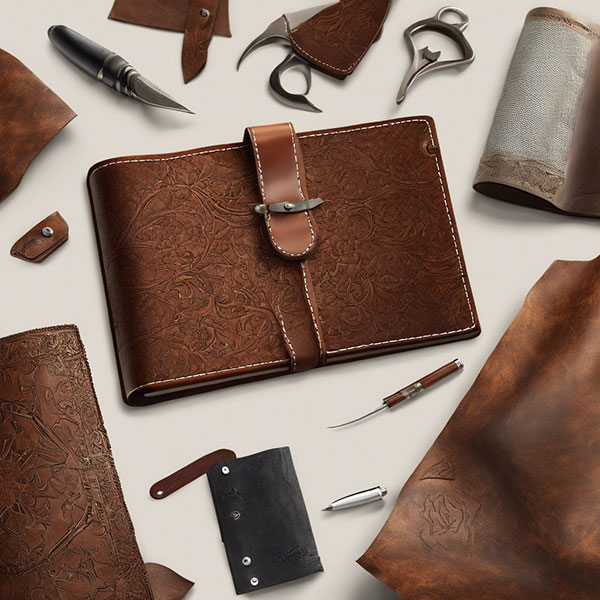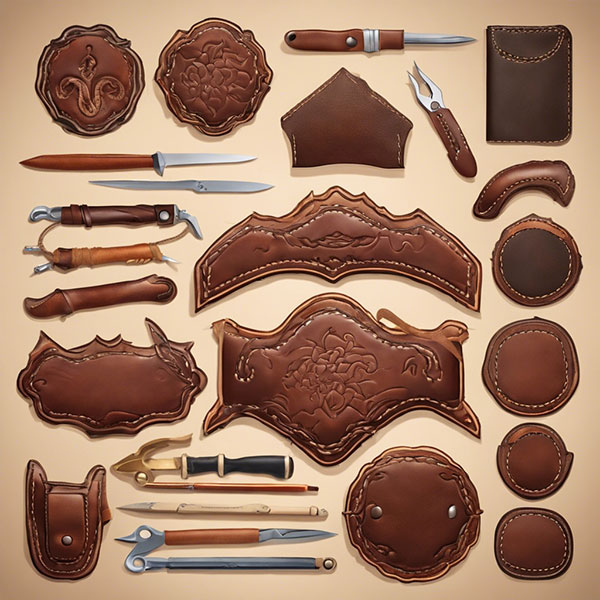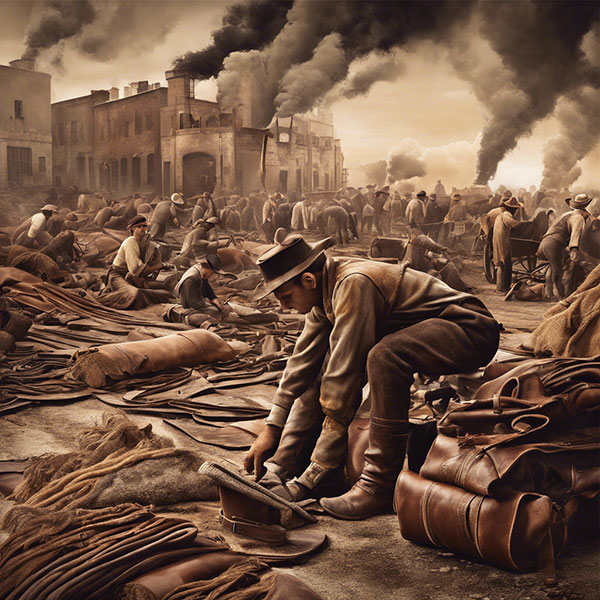The art of leather production in Iran boasts a remarkable history, dating back three thousand years and positioning Iranians as the world’s first and oldest leather producers. From the pre-Christian era to the present day, the Iranian leather industry has undergone a fascinating evolution, blending traditional craftsmanship with modern production techniques. This article delves into the rich legacy of Persian leather, exploring its historical significance, the challenges faced, and the promising future of Iranian leather fashion.

Iranian Leather Industry: A Historical Evolution
The Roots of Iranian Leather Craftsmanship
The historical evolution of the Iranian leather industry traces its roots to ancient times, showcasing the country’s genetic proficiency in livestock hide. Since around 1500 BC, Iranians utilized animal hides for various purposes, including clothing, shoes, weaponry, and even writing.
Early 20th Century: Pioneering Modernization
The early 20th century marked a significant period for the industry with the introduction of Western leather processing machinery. Foreign investment played a pivotal role, leading to the establishment of the Khosravi leather factory in 1931/32 – a milestone that made it the largest and most modern factory at the time.
Challenges and Resilience
Despite flourishing before the 1979 Islamic Revolution, the Iranian leather industry faced challenges, including sanctions and the import of Chinese products. This adversity resulted in factory closures and job losses, yet the industry displayed resilience in overcoming these hurdles.
Government Initiatives and Current Status
Recognizing the industry’s potential, the Iranian government actively encourages leather companies to focus on high added value products. However, despite significant investments, most of the 170 active leather companies in Iran operate at only 40% of their capacity, indicating a need for further exploration and promotion.

Traditional Craftsmanship in Iranian Leatherworking
Historical Overview
Iran’s rich history of craftsmanship, particularly in leatherworking, is illuminated in the book “Traditional Crafts in Qajar Iran.” Authored by Willem Floor, the book highlights Iran’s challenges in the 19th century, competing with European manufacturers, with a focus on the excellence of Iranian leather crafts.
The Significance of Iranian Leatherworking
Leatherworking holds deep cultural and heritage significance in Iran, evolving through generations. The enduring legacy is emphasized in Willem Floor’s analysis, showcasing how Iran adapted traditional techniques and responded to globalization in the 19th century.
Challenges and Evolution
The challenges faced in the 19th century prompted Iranian artisans to adapt to changing market dynamics. Iran’s response to globalization, the adaptation of traditional techniques, and the evolution of Iranian leather fashion are integral aspects detailed in the book.
The Expertise of Willem Floor
Willem Floor’s expertise in development economics and Persian studies adds credibility to the discussion of traditional craftsmanship in Iranian leatherworking. Insights from “Traditional Crafts in Qajar Iran” deepen our understanding of the challenges, significance, and evolution of this artistry.

Impact of Historical Events on Iranian Leather Industry
Historical Roots and Foreign Involvement
The Iranian leather industry’s rich historical background dates back to the early 1900s, with foreign involvement, particularly from Western companies, playing a crucial role in modernization.
Impact of the 1979 Islamic Revolution
The Islamic Revolution of 1979 significantly influenced the Iranian leather industry. Sanctions led to a shift towards advanced machinery production domestically, marking a pivotal moment in the industry’s history.
Challenges and Government Support
Despite government support and subsidies, the industry faces challenges such as difficulty finding export markets, competition from imports, and concerns about domestic leather goods’ quality. Factory closures and job losses have resulted.
Current State and Future Prospects
Presently, the industry operates at only 40% capacity, indicating ongoing challenges. Innovations and strategies are needed to enhance competitiveness on the global stage.

Challenges and Opportunities in Iranian Leather Market
Global Leather Manufacturing Industry
The leather market in Iran plays a significant role in the global leather manufacturing industry, expected to grow at a CAGR of 7.4% by 2028, reaching $754 billion. Efforts to address animal welfare, environmental impact, and working conditions are underway.
Production Process and Value Chain
The production process involves several steps, combining traditional techniques with modern technology. The value chain includes raw material acquisition, tanning, finishing, and product manufacturing, with quality depending on each step’s excellence.
Global Market Trends
Major global players like LVMH, Kering, and Hermès influence the industry, setting trends such as increasing demand for sustainability, growth in emerging markets, technology-driven innovation, fluctuating raw material prices, and growing competition.
Environmental Concerns and Sustainability
Environmental concerns in leather manufacturing, such as the use of hazardous chemicals, high water usage, and deforestation, have led to the development of sustainable practices. Embracing sustainability is crucial for meeting evolving consumer demands.
Modern Landscape of Iranian Leather Production
Potential of Iranian Leather Industry
Iran’s abundance of animal husbandry resources positions it as a potential major player in leather production. Despite challenges post the 1979 Revolution, advancements in machinery and technology have enhanced the industry’s production process.
Current Export Focus and Future Strategy
Currently, Iranian leather exports primarily involve raw hides and skins at relatively low prices. However, there is a growing emphasis on processing high-value products to increase profits and establish a stronger international presence.
Conclusion
In conclusion, the Iranian leather industry’s deep-rooted historical significance has shaped its remarkable evolution. From traditional craftsmanship to modern production, the industry has overcome challenges, demonstrating resilience and growth potential. The impact of historical events and foreign involvement has been pivotal, and the future hinges on navigating challenges and embracing sustainability. The enduring legacy of Persian leather continues to unfold, paving the way for the evolution of Iranian leather fashion on the global stage. With a steady compound annual growth rate, the Iranian leather market is poised for further development, reflecting the enduring legacy and promising future of Persian leather.



